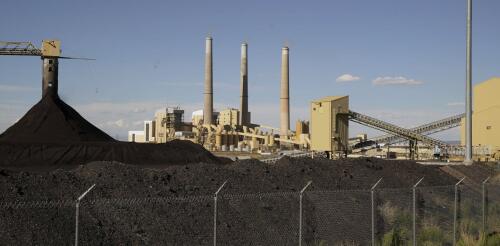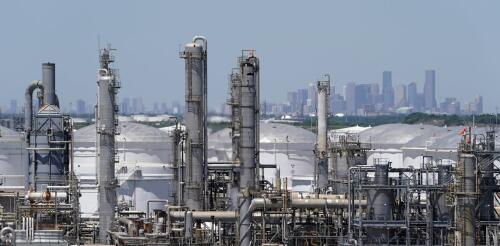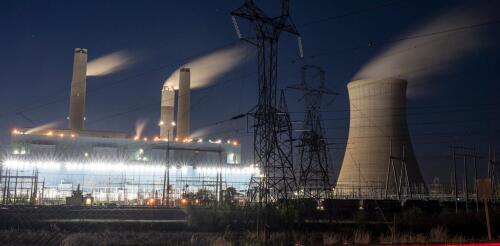Clean Air Act
Electric power generation in the U.S. is shifting rapidly away from fossil fuels toward cleaner and lower-carbon sources. State clean energy targets and dramatic declines in the cost of renewable electricity are the most important reasons. But fossil fuel plants still generate 60% of the U.S. electricity supply, producing air, water and land pollutants and greenhouse gases in the process. To reduce these impacts, the Environmental Protection Agency announced a suite of rules on April 25, 2024. They focus mainly on coal plants, the nation’s most-polluting electricity source. As an environmental lawyer who has been in practice since the early 1970s, I believe these curbs on power plant pollution are long overdue. The new rules close loopholes in existing laws that have allowed coal-fired power plants to pollute the nation’s air and water for decades. And they require utilities to drastically slash these plants’ greenhouse gas emissions or close them down. Oppon...
Did you receive a mail-order package this week? Carriers in the U.S. shipped 64 packages for every American in 2022, so it’s quite possible. That commerce reflects the expansion of large-scale retail in recent decades, especially big-box chains like Walmart, Target, Best Buy and Home Depot that sell goods both in stores and online. This has led to the growth of distribution centers that fulfill these orders. While mail-order commerce is convenient, these centers also have harmful impacts, including traffic congestion and air and water pollution. I study environmental history, and I am part of a group of scholars examining the environmental impacts of big-box stores like Walmart, Target, REI and Bass Pro Shops. Sustainability is a hot topic in the retail sector, but my research on the history of Target – the sixth-largest retailer in the U.S. – shows how retail companies have largely escaped the kinds of environmental regulations that affect other sectors such...
The U.S. Environmental Protection Agency has announced a new standard for protecting the public from fine particulate air pollution, known as PM2.5 because the particles are smaller than 2.5 millionths of a meter. These minute particles can penetrate deeply into the body and have been linked to many serious illnesses. The new rule sets an annual limit of 9 micrograms per cubic meter of air, down from the previous level of 12 micrograms. States will be required to meet this standard and to take it into consideration when they evaluate applications for permits for new stationary air pollution sources, such as electric power plants, factories and oil refineries. Under the Clean Air Act, the EPA is required to set air pollution standards at levels that protect public health. In the four articles that follow, scholars wrote about the many ways in which exposure to PM2.5 contributes to cardiovascular disease, lung cancer, other illnesses such as dementia, and premature deaths. 1. An...
Tens of millions of Americans, including many Texans like me, live in counties that will soon be violating air pollution particle standards for the first time. It’s not that our air is getting dirtier – it’s because the U.S. Environmental Protection Agency just tightened its cap on the deadliest air pollutant: fine particulate matter, or PM2.5. The EPA acted because the Clean Air Act requires it to periodically review existing standards for six major air pollutants to ensure that the targets protect public health. Its 2022 scientific review showed that fine particles increase rates of illnesses and death even when inhaled at levels below existing standards. The EPA estimates that meeting its new standard would yield up to US$77 in health benefits for each $1 of control costs and would save up to 4,500 lives in 2032. Now, states must develop plans that meet the standard. As an atmospheric scientist who has studied air pollution for a quarter century, I’...
On May 11, 2023, the Biden administration proposed new regulations to curb carbon pollution from existing power plants. The new rules replace the Obama administration’s Clean Power Plan, which was proposed in 2015 but ran into multiple legal challenges and never took effect. Nonetheless, in a high-profile 2022 ruling, West Virginia v. EPA, the U.S. Supreme Court found that the Obama administration’s approach exceeded the Environmental Protection Agency’s authority to regulate power plant carbon pollution under the Clean Air Act. Jennifer K. Rushlow, dean of the Vermont School for the Environment and a law professor at Vermont Law & Graduate School, explains how the new regulations are designed and the delicate balance they attempt to strike between slowing climate change and avoiding further legal setbacks. 1. How has the Biden administration tailored these regulations in response to the West Virginia v. EPA ruling? The scent of West Virginia v. EPA is al...




